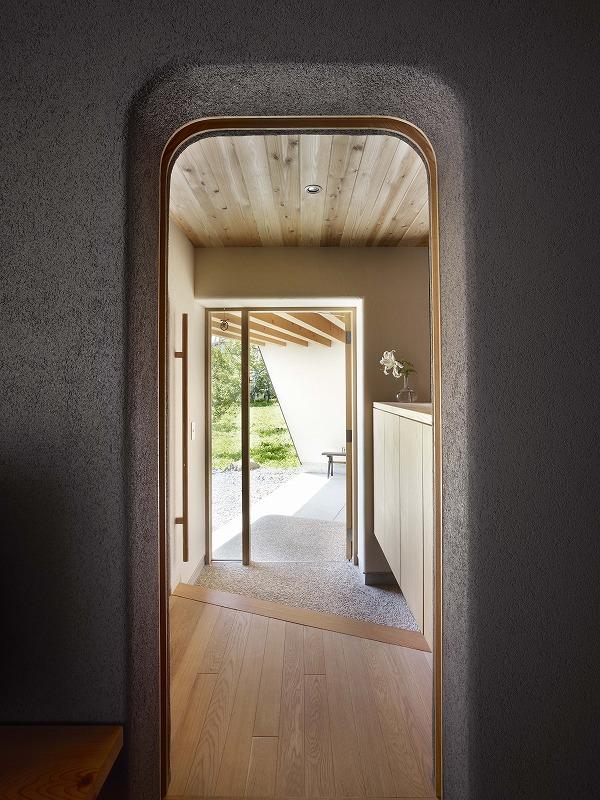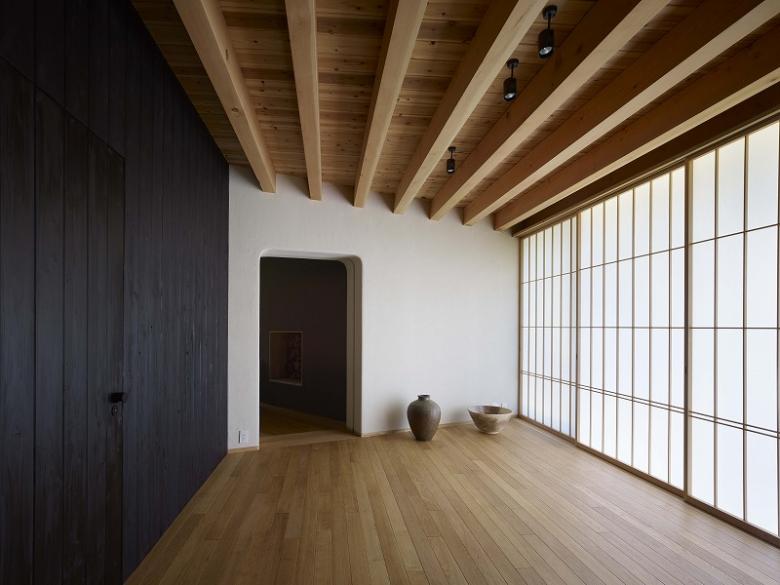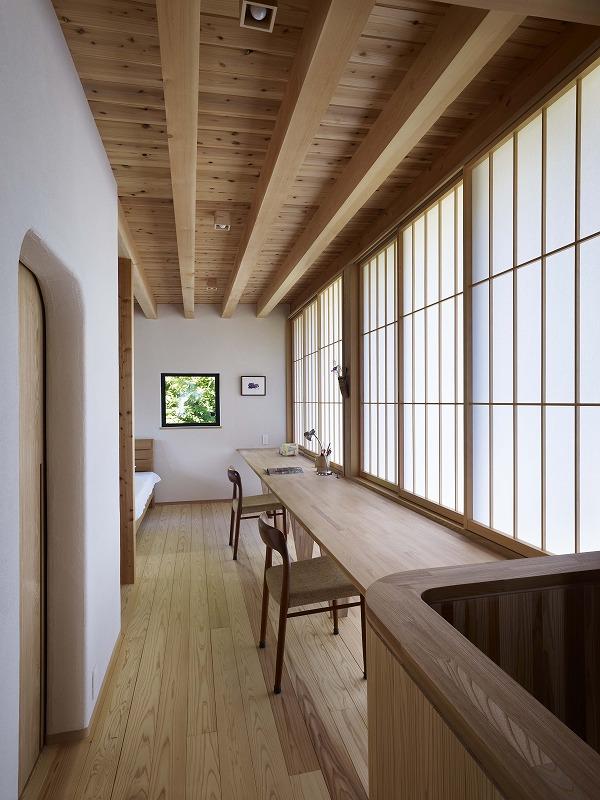Yatsugatake Villa
Yatsugatake Villa
1. June 2013
This vacation home designed by Kiyotoshi Mori and Natsuko Kawamura of MDS Co. Ltd sits in the foothills of Yamanashi Prefecture’s Yatsugatake Mountains.
The team aims to help keep Japan’s cultural heritage alive by taking a fresh look at traditional crafts and culture, and then incorporating them into projects. Here, they employ shoji (paper screens) to achieve a space with a strong “Japanese” feeling to it. The innovative design takes the traditional concepts of coexisting with nature and valuing a building site’s natural surroundings and climate, and adapts them to modern lifestyles. We asked Mori and Kawamura to tell us about the project.
Exterior
Tell us about the basic concept behind the project.
Situated in the foothills of Mt. Yatsugatake, this vacation home gently incorporates the natural environment around it. The fan-shaped design opening to the south means plenty of sun streams in during the cold winters: no matter the time of day there’s always a place to bask in the sun. In contrast, strong summer sunshine is blocked by a roof and side walls that protrude beyond the façade, providing shade. Windows in the north and south exterior walls bring cool breezes into the house. The result of these design strategies is a structure that is simple yet filled with a rich diversity of scenes.
Exterior close-up
What do you hope to convey through this project?
The shoji (sliding paper screen) that we chose for this project are traditionally used in Japanese-style rooms with tatami mats. As lifestyles change in contemporary Japan, however, fewer Japanese-style rooms are being built, and the use of shoji is declining. But shoji are an excellent material in many ways: they provide privacy while letting light pass through, and they also function well in terms of insulation. They have been used in Japan for hundreds of years and they are right there beneath our noses, yet they are being abandoned. We wanted to find a way to use new designs to incorporate valuable traditional material like shoji into modern lifestyles.
Looking out from the entryway
Entrance hall
What is the role of architects and architecture in society?
We’re both Japanese, so I’ll address the question in terms of that specific identity. Japan has lots of wonderful traditional industries, but if architects don’t proactively make use of them they’re going to fall into decline. We believe that to ensure these traditional skills are passed down to future generations, it’s necessary to first understand their benefits and unique characteristics, and then design in a way that makes use of them. Recently we’ve had increasing opportunities to work abroad, and we think that spreading the message about Japan’s terrific traditional industries shouldn’t stop at the domestic level, but rather needs to happen internationally as well.
Living room
How does this project fit into contemporary architectural trends?
The project takes into account key elements of the natural environment, like the surrounding landscape and climate, and reflects them in the space. It’s a passive design that makes abundant use of local materials and comes together in a very natural form. That’s not the result of simply mimicking traditional Japanese or Western architectural conventions, but rather of taking what’s best from the past and adapting those elements to contemporary lifestyles by inserting them into a new design. In a society where you constantly hear words like "ecological" and "back to nature," we think this is one good option for how to build.
View from the Japanese-style room to the dining room
What did you learn from this project? What will you take from it to future work?
One theme we pursued in this project was coexistence with nature. We worked out the shape of the building based on our consideration of questions like how to best incorporate sunlight, fresh air, and views. That’s an approach we hope to develop even more in the future. Another theme was passing on traditional skills and culture. This time we consciously incorporated shoji screens into the design, but in the future we’d like to work with a wide range of traditional craftsmen and women to help get the word out about the potential that exists within Japanese craftsmanship.
Looking outside from the living room
Study seen from the bedroom
Study
Ranma (openwork screen)
Dining room, evening
Exterior, evening
Plan
Sectional Drawing
E-mail interview by Yuna Yagi (translated from Japanese)
Yatsugatake Villa
2012
Yamanashi
Architects
MDS Co. Ltd
Design Principal
Kiyotoshi Mori & Natsuko Kawamura
Structural Engineer
Shigenori Ooga / OGA sd.
Contractor
Takahashi Kenchikusha
Site Area
691.00㎡
Building Area
101.75㎡
Total Floor Area
110.01㎡
Photo
Toshiyuki Yano













